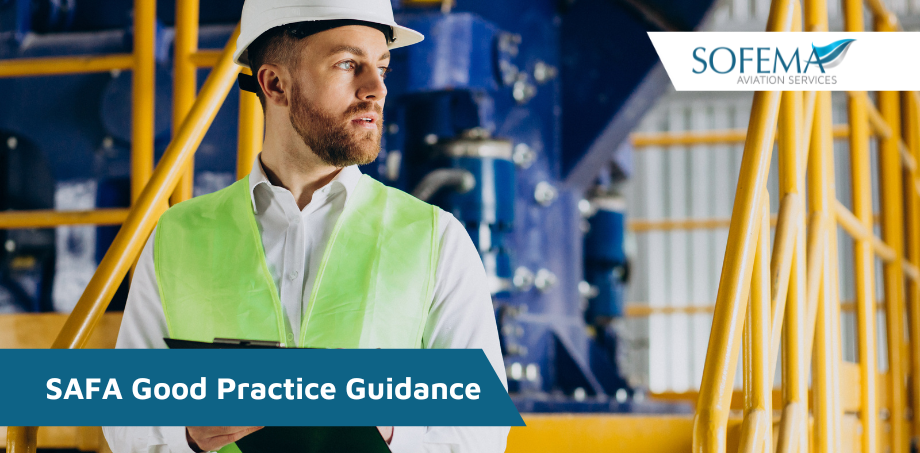Ensure effective preparation related to Aircraft Ramp Inspections whether carried out as part of Safety Assessment of Foreign Aircraft (SAFA) or Safety Assessment of Community aircraft (SACA) – Sofema Aviation Services (SAS) www.sassofia.com looks at the steps which should be taken.
Note – The SAFA inspection is also known as EU Ramp Inspection Program (RIP).
Inspection should typically take no more than 20 to 30 minutes & Inspectors are advised that delaying an operator for a non-safety related issue could result in unwanted human factor issues with possible negative effects on the flight preparation. (Flights should only be delayed for a safety-related issue.)
The items checked during ramp checks are based on a risk-based approach and can differ from operator to operator (for example depending on findings raised during previous inspections).
Cautionary note – Operators who are checked with findings will most likely get follow-up checks until confidence is built up / restored!
Introduction
The regulatory authorities choose which aircraft to inspect and when to inspect it so that being prepared for an anytime anyplace inspection will mean that you are in the best possible “place” should your aircraft be chosen.
- Note – essentially the standard applied to the inspection is that which is referenced by ICAO International Civil Aviation Organisation.
Typical Checks may include any of the following areas:
- Flight Crew Licenses;
- Procedures and manuals that should be carried in the cockpit;
- Compliance with these procedures by flight and cabin crew;
- Safety equipment in cockpit and cabin;
- Cargo carried in the aircraft; and
- Aircraft Technical Condition.
Three Categories of Findings have been defined:
- “Category 1” finding is called a minor finding;
- “Category 2” is a significant finding; and
- “Category 3” is a major finding.
The terms “minor”, “significant” and “major” relate to the level of influence on safety.
If there is a “corrective actions before flight authorised” finding – then a repair must be made before the aircraft is released to fly.
Are you prepared?
Best practice is to have a binder or electronic document that follows, point for point, the SAFA ramp inspection items list:
- Flight Crew license & Recurrent Training Status
- Medical Certification
- Any Aircraft Documentation including Registration, Insurance, and Airworthiness
- Flight Leg Paperwork:
o Flight Plan
o Fuel Status
o Weight & Balance – Load Sheet
Always approach the task from the ICAO perspective to accept the difference between FAA and EASA requirements.
- Some of those differences include a demonstration of qualification and currency and flight planning activities
Note – EASA’s lack of a grace period for training & medical certificates (FAA allows a grace period of 6 months).
Pilots requiring eyeglasses or contact lenses must have a spare pair available in the cockpit. (A spare pair is not required in the U.S.)
New Item – Alcohol Testing
- EASA regulations requiring alcohol testing during ramp checks will take effect across all SAFA countries in Aug 2020.
Likely Targets
- Fuel Calculation and Flight Routing: Alternates must be planned with a SID/STAR routing.
o It may be usual in many countries to plan Direct Point-to-Point Great Circle Fuel (DCT). Note – This is not the case in EU Countries.
- Non-compliance during a ramp inspection could lead to either a Cat 2 finding when sufficient fuel was taken into account such that the required fuel is above the minimum, or a Cat 3 finding when this was not the case.
- Precision-Area Navigation (PRNAV/RNAV-1 capability).
o Non-compliance constitutes a Cat 3 finding when landing at airports that require it.
Note – The finding will also be reported to the aeronautical oversight department which can give fines for such violations.
- Incorrect flight plans – specifically saying you are 8.33 MHz equipped and PRNAV/RNAV-1 capable.
o Again, this could lead to findings and fines beyond the RIP programme.
- TCAS 7.1 – the TCAS 7.1 requirement became a worldwide standard under ICAO on the 1st of January 2017.
Flight Planning Differences
FAA requires a total of 45 minutes worth of fuel to be added to the fuel needed for that direct route. EASA requires fuel planning for the most likely route to the alternate, plus 45 minutes of fuel.
- T/O fuel should match the planned amount.
- Be prepared to show accurate weight and balance calculations, even for Part 91 operations.
- Correctly notated journey logs and master documents are necessary.
Next Steps
Follow this link to our Library to find & Download related documents for Free.
Sofema Aviation Services Provides Classroom & Webinar Training related to SAFA & SACA Ramp Inspections. For additional details, please visit www.sassofia.com or email team@sassofia.com
Tags:
aviation, Civil Aviation Organisation (ICAO), EASA, FAA, Good Practices, Human Factors, Ramp Inspection Program (RIP), SAFA, Safety Assessment of Community Aircraft (SACA), Safety Assessment of Foreign Aircraft (SAFA)




